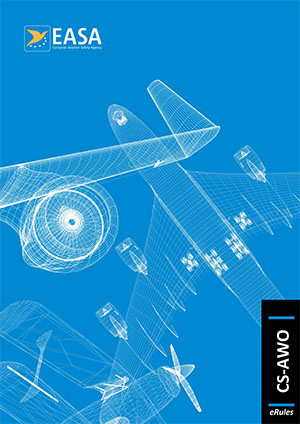CS AWO.A.HUD.107 Performance demonstration
ED Decision 2022/007/R
(See AMC AWO.A.HUD.107)
(a) When a HUDLS is used for primary guidance (HUD manual landing), the following additional variables shall be included in the performance demonstration (see AMC AWO.A.HUD.107):
(1) ambient lighting conditions, and approach and runway lighting;
(2) variations of the reported runway visual range (RVR);
(3) individual flight crew performance; and
(4) touchdown zone slope and pre-threshold ground profile if flare cue is provided.
(b) The HUD (or equivalent display) shall meet the performance and integrity requirements applicable to the intended type of operation. Refer to CS-AWO Subpart B Section 2 SA CAT I, Section 3 CAT II or Section 4 CAT III.
[Issue: CS-AWO/2]
AMC AWO.A.HUD.107 Performance demonstration
ED Decision 2022/007/R
Runway or aerodrome ground profile considerations for HUDs with flare guidance
Where use is made of height above ground indicators that depends on the ground profile (such as radio-altimeter signals) in the HUD, any effects of the ground profile before the runway or along the runway on the performance of the system should be examined.
The family of profiles to be investigated should take due account of the way in which the system uses height above ground indicator (such as radio-altimeter signals) at different heights on the approach. Terrain and runway up slopes, down slopes and other terrain irregularities should be investigated. For the purposes of this assessment, the touchdown zone slope is considered to be the slope of the runway between threshold up to 900 m from the runway threshold.
Note: Information on the characteristics of aerodromes is contained in ICAO Annex 14. The examination of a number of aerodromes used for automatic landing has shown that the following features may be encountered:
a. sloping runway — slopes of 0.8 %;
b. hilltop runway — 12.5 % slope up to a point 60 m prior to the threshold; or
c. sea-wall — 6 m (20 ft) step up to threshold elevation at a point 60 m prior to the threshold.
Where approval is sought for the use of a head-up guidance landing system (HUDLS), to show compliance with CS AWO.B.CATIII.115, it will be necessary to use a simulator with an acceptable visual system which accurately represents the real aeroplane, in particular the handling qualities, the ground effect, the fog structure and the cut-off angle. A moving-base simulator is thought to be necessary, and consideration of the effect of the structural response of the airframe to turbulence may be necessary to achieve a realistic simulation of the effect of turbulence on the flight deck.
Where a HUDLS is used for primary guidance (HUD manual landing) for Category III operations, it may be expected that at least 500 simulated landings will be necessary and that 100 or more landings by the real aeroplane will be made. At least 10 pilots of varying background and experience should be employed for both simulator and flight tests. They should be given appropriate training in the use of the HUDLS. No pilot should perform more than 8 consecutive landings without a break of at least 1 hour.
Monte Carlo techniques should be considered where applicable.
The limit risk demonstration, whilst suitable for autoland certification, has been found to be unsuitable for head-up guidance certification. An acceptable alternative, assuming that wind is the most critical parameter, is to perform 10 simulated approaches and landings in limiting winds from each of the 8 cardinal points of the compass (a total of 80 runs), and demonstrate that the failure rate does not exceed 20 %.
AMC AWO.A.ALS.106 contains additional performance demonstration aspects for HUDLSs.
[Issue: CS-AWO/2]
CS AWO.A.HUD.108 Fail-operational hybrid landing systems
ED Decision 2022/007/R
Where a HUDLS is fitted as part of a hybrid system, its performance does not need to meet the same criteria as the primary system, provided that it:
(a) meets the overall performance requirements, taking into account the probability that it will be used; and
(b) is sufficiently compatible with the primary system so as to retain pilot confidence.
[Issue: CS-AWO/2]
